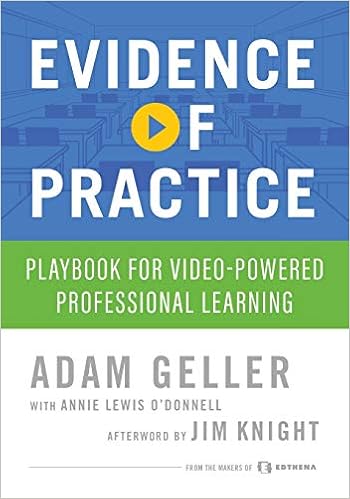
Video observation and feedback can accelerate teacher growth when used as part of a comprehensive professional development plan. Evidence of Practice: Playbook for Video-Powered Professional Learning helps educators across all disciplines create and implement a plan to reap the benefits of video within a coaching and reflection process.
The book draws from researcher and practitioner advice, and it provides concrete strategies and tips that educators can apply to their own districts, schools, or classroom contexts. Authored by Adam Geller, founder of the Edthena video observation platform, along with Annie Lewis O’Donnell, the book also includes an afterword by instructional coaching expert Jim Knight.In total there are twelve strategies, each brought to life through an educator vignette, an examination of the potential learning outcomes, and a detailed planning and implementation guide.
Some of the strategies include:
- Preteach. Teachers record themselves rehearsing portions of upcoming instruction. Refine teacher practice before teaching with students.
- Video Learning Communities. Teachers view, analyze, and discuss footage of one another’s classrooms in order to fuel collective improvement. Think PLCs, but powered by video and online collaboration.
- Video Rounds. A team of educators view and discuss video clips from multiple classrooms to identify and learn from trends across a school or system, similar to instructional rounds. Online Lesson Study. A group of educators work collaboratively to examine instructional materials, design and teach a lesson, and discuss the results. It’s lesson study with less logistical complexity and the same focus on student learning and well-being.
The book also covers the research basis for putting video evidence at the center of professional learning, focusing techniques for analyzing video of classrooms, and tactical guidance about recording and sharing teaching videos.
www.evidenceofpractice.com





